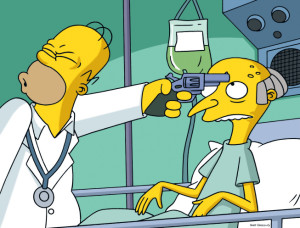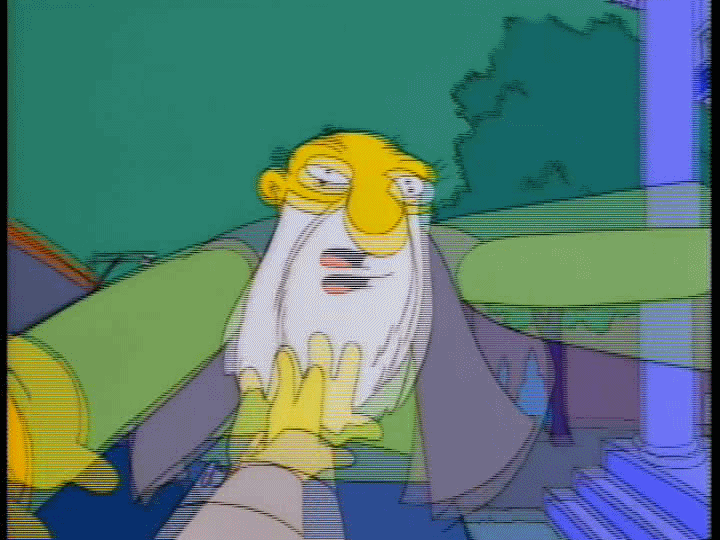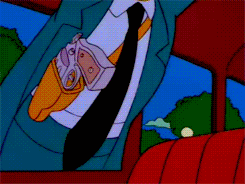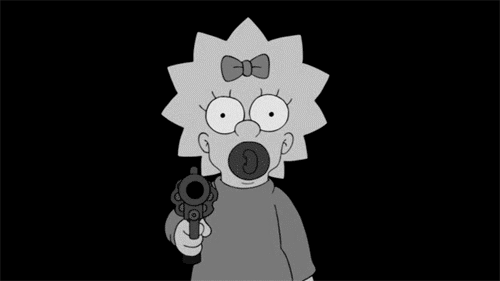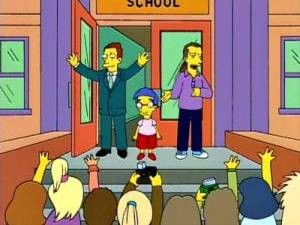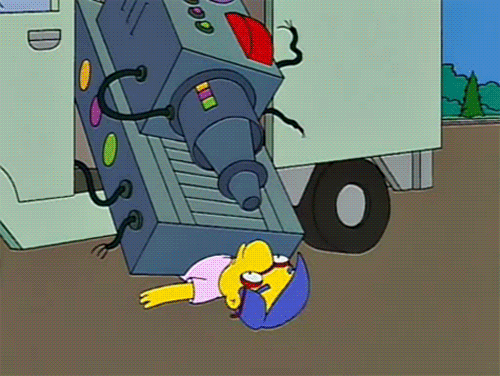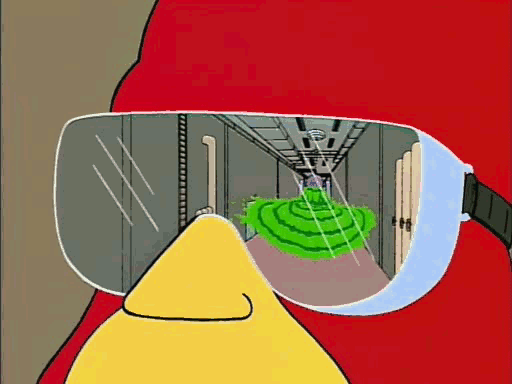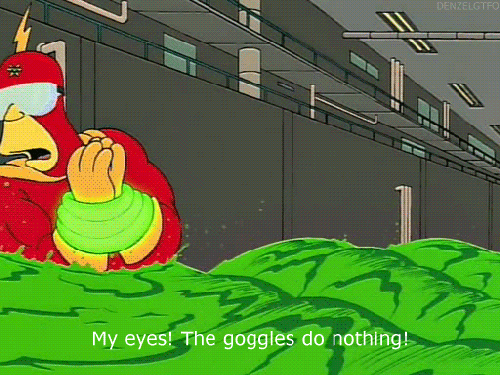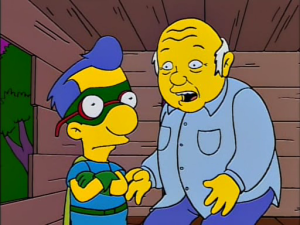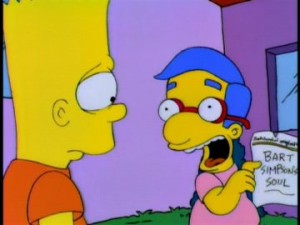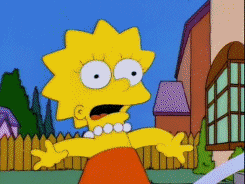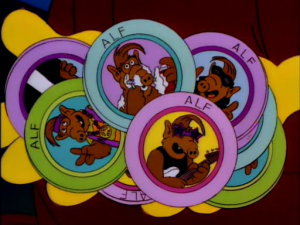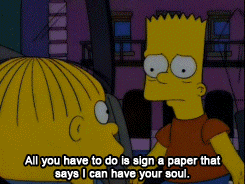It’s been over twenty years since I can remember the first time I saw Matt Groening’s “crudely drawn” family of five deal with the almost surreal problems that life seemingly presents on a daily basis. From that moment I laid my eyes on “The Simpsons” I became enamored and, eventually, a life-long fan (more than likely I’ll be re-watching episodes when I’m old enough to shout at clouds). During my time as a “Simpsons” viewer I’ve discovered many relatable life lessons that I plan to share with you. Welcome to “The Simpsons Life Lesson” series (season seven).
It’s Always the One You Least Expect (Episode 1: “Who Shot Mr. Burns? – Part Two”)
The sixth season of “The Simpsons” ended with the cliffhanger to end all cliffhangers (for “The Simpsons” universe) as fans around the world tried to answer to a potentially series-changing question, “Who shot Mr. Burns?” After his loyal assistant (and wannabe romantic interest) Waylon Smithers turned his back on his former employer and became a drunken wreck, the Springfield Police Department singled him out as suspect numero uno. But it quickly became obvious that Smithers didn’t have a hand (or bullet) in Mr. Burns’ near-demise.
The owner of Springfield’s sole nuclear power plant entered a state of shock following his awaking from a drug-induced coma. Lisa Simpson, intrigued with the case and a need to be the town’s answer to Nancy Drew, joined the police in eliminating suspects until it came down to one person: Lisa’s father, Homer Simpson. With evidence of Simpson’s DNA on the suit Mr. Burns was wearing when he was shot, Homer’s recent psychotic breakdown directed at his boss after Mr. Burns couldn’t remember his name, a gun featuring Homer’s fingerprints located in his car that held bullets perfectly matching the one taken out of the victim, and Mr. Burns suddenly repeating the phrase, “Homer Simpson,” in various tones (including one moment where he answered Springfield’s resident quack Dr. Nick just like everyone else in town – “Hi, Dr. Nick!” – but only with his potential shooter’s name in place of the person he greeted, “Ho-mer Simp-son!”), Homer was taken into custody.
Homer, thanks to the sheer stupidity hungry law enforcement officials, broke away and confronted the bed-ridden Mr. Burns with the threat of finishing what he appeared to have started. Lo and behold, Homer’s violent intent and subsequent shaking of the victim broke Mr. Burns out of his stupor; giving the attempted candy thief a chance to tell everyone the truth: the Simpson family’s year-old baby Maggie was responsible for the shooting when Mr. Burns’ own gun slipped from its holster, going off while in the clutches of the littlest Simpson. From Groundskeeper Willie to famed Mambo musician Tito Puente, no one looked more innocent than the infant Simpson.
So no matter what Lisa said throughout the episode, it’s never the one you expect. In the case of who shot Mr. Burns, it wasn’t an angry employee or someone who had been greatly wronged by the millionaire’s actions, but a single baby … a single, potentially homicidal baby.
Fame isn’t what it’s Cracked Up to Be (Episode 2: “Radioactive Man”)
It’s one thing to dream about being a part of your favorite comic turned into a movie. It’s an entirely different situation when the pressures of making a dream into reality that turns even the biggest fan into a film-hating cynic – and that’s exactly what happened to Milhouse Van Houten. After discovering through a local comic shop owner that his favorite comic book character, “Radioactive Man” (though he became quite fond of “Radiation Dude” by the episode’s airing), Milhouse joined his best friend and leader in “boys will be boys” shenanigans Bart Simpson to tryout for “Radioactive Man: The Movie” in hopes of becoming the lead character’s sidekick, Fallout Boy. Though Bart had all the quirks, timing and self-confidence worthy of Hollywood stardom, it was Milhouse who earned the opportunity of a lifetime.
But the youngest Van Houten was apprehensive about being involved in such a large project – though his parents were so sure in his abilities they went on a spending frenzy after the announcement. Milhouse turned out to be a very good actor, but the rigors of saying Fallout Boy’s favorite catchphrase (“Jiminy jillickers”) repeatedly to be recorded from different angles, getting up at five o’clock in the morning for makeup, and being hit with actual radiation proved to be too much for Milhouse’s conscience – opting to leave the movie abruptly while everyone was filming the film’s most expensive scene.
Bart (and Mickey Rooney) eventually found Milhouse hiding out in Bart’s tree house, listening to his friend lament over the shallowness of stardom. No matter how much Bart and Mickey pleaded, Milhouse wasn’t having anything they or Hollywood were selling.
Don’t be fooled by the bright lights, big money and numerous admirers throwing themselves at you at any given minute. Fame is fleeting and will leave you hollow as the people responsible for your failed stardom return to Hollywood with their proverbial tails between the legs (though the people of Hollywood will be waiting for their own with open arms, forgiving hearts and a promise to help a person get back on his/her feet).
Don’t Sell Your Soul (Episode 4: “Bart Sells His Soul”)
Like so many instances in the past, Bart Simpson found himself on the punishing end of a prank gone wrong (or right if you don’t care about getting caught) that featured the young lad handing out a hymn titled “The Garden of Eden” by “I. Ron Butterfly” that played for seventeen minutes. Bart, having to clean the church’s organ pipes alongside his friend Milhouse (who also was punished not for being a part of the joke, but tattling), had a conversation about the human soul’s existence. To prove his argument valid that souls don’t exist, Bart sold his eternal and internal “possession” to Milhouse for five dollars (money used to purchase those dinosaur shaped sponges that grow about twice the size they are in the packaging when put in water).
But reality soon set in for Bart as ordinary occurrences in his life became burdens. Automatic doors refused to open for Bart; his pets were unusually hostile towards him; even the power of his favorite cartoon “Itchy & Scratchy” could bring him joy. Through a mixture of powerful dreams featuring a soul-less Bart watching others enjoy themselves with their souls and his sister’s taunting/advice, Bart took it upon himself to recover what was once his. Bart would have to rely on the power of others – in this case his sister – to return things back to normal when Lisa purchased the piece of paper labeled “Bart’s Soul” from their local comic book shop after Milhouse re-sold the essence of his friend for “Alf” pogs (“Remember Alf?”)
Just because you don’t necessarily believe in a soul or actually have one, don’t sell your soul to anyone. You could end up scurrying through the streets at night like Michael Jackson after you failed to take the soul of your sister’s ex-boyfriend.


